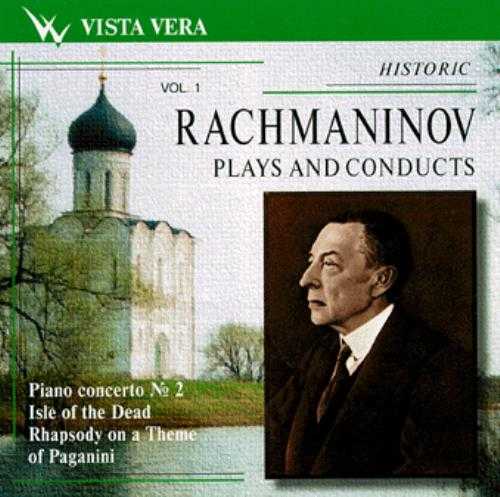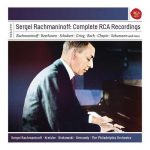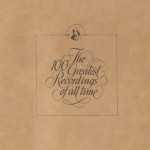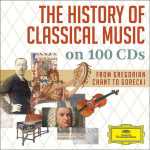
Audio CD
Number of Discs: 8 CD
Format: FLAC (tracks)
Label: Vista Vera
Size: 1.77 GB
Recovery: +3%
Scan: yes
CD 01
The first disc of our historic 8-volume collection that illustrates Rachmaninov’s genius as pianist and conductor.
Vista Vera are serving admirers well with this set which restores to circulation the majority of his discs. The authorial voice we hear conducting the Isle of the Dead is intensely purposely but dramatic, powerful and tense. This famous recording and that of the Third Symphony (vol.5) show what we have missed through the restrictions on his conducting for RCA Victor. But enough remains to make a study of this body of work both necessary and important – both for students of Rachmaninov and for admirers of the repertoire and great pianism. a pianophile without Rachmaninov’s recordings should not really sleep at night.
01 Sergei Rachmaninov – Piano Concerto #2: Moderato; Allegro
02 Sergei Rachmaninov – Piano Concerto #2: Adagio Sostenuto
03 Sergei Rachmaninov – Piano Concerto #2: Allegro Scherzando
04 Sergei Rachmaninov – Symphonic Poem: Isle Of The Dead
05 Sergei Rachmaninov – Rapsody On A Theme Of Paganini
Sergei Rachmaninov – piano
Philadelphia Orchestra / Leopold Stokowski (1-3, 5), Sergei Rachmaninov (4).
CD 02
1 Schubert-Liszt. Serenade
2 J.S. Bach. Sarabande
Bach-Rachmaninov. (From Partita No.3 for violin solo, BWV 1006)
3 Preludio
4 Gavotte
5 Gigue
6 Scarlatti-Tausig. Pastorale, L.413
7 L. Daquin. Le coucou
8 G.F. Hendel. Aria and Variations (from Harpsichord Suite No.5)
W.A. Mozart
9 Theme and Variations
10 Rondo alla turca
11 Gluck-Sgambati. Melodie from the opera “Orfeo ed Euredice”
12 Beethoven-Rubinstein. Marcia turca
13 L. Beethoven. 32 Variations C-moll, WoO 80
L. Beethoven. Sonata for violin and piano G-Dur, op. 30 No.3
14 Allegro assai
15 Tempo di menuetto, ma molto moderato e grazioso
16 Allegro vivace
S. Rachmaninov, piano (1-16)
F. Kreisler, violin (14-16)
Recorded: 1919 (6, 9); 1920 (7); 1925) (9-12); 1928 (14-16); 1936 (8); 1942 (1-5)
CD 03
It’s impossible to pick highlights from amongst these eight discs but let’s try his Liszt Hungarian Rhapsody No.2 with Rachmaninov’s own cadenza. There’s some exceptional half pedal, perfectly audible in this 1919 acoustic, with swathes of colour and virtuosity, incredible glowering bass and a daredevil drama a-plenty. His Gnomenreigen grows inexorably to become all enveloping, his Kreisler transcription of Liebesfreud comes complete with thunderous rococo charm, bass extensions and an air of naughtiness and he teases Liebeslied similarly, not least the left hand line. He animates Debussy’s Golliwog’s Cakewalk with teasing rubati and fulsomeness and brings Scarlatti to bear on Paderewski’s Minuet. His Chopin is full of freedom, metrical and, it must be said, textual. Not everyone will respond wholeheartedly to his playing, but even those who shy away from Rachmaninov’s personality-rich playing will surely be captivated by something, by some detail or subtlety. The strata of tone colours and rubati of the Third Ballade, for instance. Or the lullaby-like E flat major Nocturne, with its unimpeachable trill, the tied bass notes and his control of piano. The F sharp major may have some idiosyncratic things amidst the magnificence of the decorative runs but, as so often with Rachmaninov, doubt is stilled; for all the personalisation, it makes sense. There’s hardly any pedal in the Waltz in E flat major – the mechanism is under perfect clarity and control at a relatively sedate tempo (and hear the piano “laugh” so suggestively). For Rachmaninov, truly, each note has its meaning.
01 Liszt. Hungarian Rhapsody no 3 (candenza Rachmaninov) 1919
02 Liszt. Gnomenreigen (concert etude no 2) 1925
03 Kreisler-Rachmaninov. Liebesfreud (1942)
04 Kreisler-Rachmaninov. Liebeslied (1921)
05 Debussy. Golliwogg’s Cakewalk (from Children’s Corner) 1921
06 Moszkovsky. La jongleuse (etude op 52 no 4) 1923
07 Paderewsky Menuet op 14 no 1(1927)
08 Bizet-Rachmaninov. Menuet (from L’Arlesienne Suite no 1) 1922
09 Saint-Saens-Ziloti. The Swan (1924)
10 Grieg. Elfin dance (from Lyric pieces op 12) 1921
11 Grieg. Waltz (from Lyric pieces op 12) (1921)
12 Allegro molto ed appassionato. Grieg. Sonata for violin and piano no 3 in C minor op 45 (1928)
13 Allegretto espressivo alla Romanza. Grieg. Sonata for violin and piano no 3 in C minor op 45 (1928)
14 Allegro animato. Grieg. Sonata for violin and piano no 3 in C minor op 45 (1928)
S. Rachmaninov, piano
F. Kreisler, violin
CD 04
That’s how we were taught to play in Russia: Rubinstein used to give his historic recitals in Petersburg and Moscow. He used to appear on the stage and say:Every note from Chopin is pure gold. Listen!” And he played and we listened.
S.Rachmaninov (from A.J. and E. Swan Memoirs)Throughout his Chopin recordings one feels Rachmaninov’s articulation and rhythm as indissoluble components of his true greatness in the repertoire. Indeed colouristically and textually he is fascinating – try the A minor Mazurka – even when he is at his most capricious and the locus classicus of that is his 1930 recording of the B flat minor Sonata. Here he extends the finale in a way not sanctioned – shall we say – by Chopin but the result is one of uplifting power, with Rachmaninov sculpting waves of impetus and not an undifferentiated mf all the way through. For all its recasting his performance of the sonata embraces all its moods, all its power and all its romance.
Frederic Chopin
01 Ballade no. 3 op. 47 in A flat major (1925)
02 Scherzo no. 3 op. 39 in C sharp minor (1924)
03 Nocturne op. 9 no. 3 in E flat major (1927)
04 Mazurka op. 68 no. 2 in A minor (1935)
05 Nocturne op. 15 no. 2 in F sharp major (1923)
06 Waltz op. 18 in E flat major (1921)
07 Waltz op. 34 no. 3 in F major (1920)
08 Waltz op. 42 in A flat major (1919)
09 Mazurka op. 68 no. 2 in A minor (1935)
10 Waltz op. 64 no. 1 in A flat major (1921)
11 Waltz op. 64 no. 2 in C sharp minor (1927)
12 Waltz op. 64 no. 3 in A flat major (1927)
13 Waltz op. 70 no. 1 in G flar major (1921)
14 Waltz op. posth. in E minor (1930)
15 Waltz op. 69 no. 2 in E minor (1923)
16 Sonata No. 2 b-moll, op. 35. 1. Grave; Doppio movimento
17 2. Scherzo
18 3. Marche funebre
19 4. Presto
S. Rachmaninov, piano
CD 05
In the summer of 1909 in his family estate in Ivanovka and in the autumn in Moscow Rachmaninov, in his own words, was working like a comvict finishing his new major composition, Piano Concerto No3. He was doing his best to complete it in time for his planned tour in America. The premier performances took place on November 28 and 30, and with great success. Ever since many majot virtuoso pianists, or, rather, those who dared to play this most complicated composition, included the Third Concerto in their repertoire. But Rachmaninov’s performance of course remains unsurpassed model in its power, depth and grandeur.
This CD represents the only recording of the Concerto made by Rachmaninov. He did it with the Philadelphia Symphony Orchestra under Eugene Ormandi. Rachmaninov regarded the orchestra as the best in the world and always gave preference to it when first playing his new works or making recordings.Recording of the Third Symphony, one of the composer’s monumental works, presents a chance to get acquainted with the skill of Rachmaninov-conductor. The recording was made on December 11, 1939.
The Third (Concerto) has a bright, steady and not at all introverted opening – nothing self-conscious or specious at all. The peaks of phrases sound unarguably right as we listen and the clarity of passagework in the slow movement is Olympian and flawless.
Rachmaninov
01 Piano Concerto no. 3 op. 30 in D minor – Allegro, ma non tanto
02 Intermezzo Adagio
03 Finale Alla breve
04 Symphony no. 3 op. 44 in A minor Lento; Allegro moderato
05 Adagio ma non troppo
06 Allegro
S. Rachmaninov, piano
Philadelphia Orchestra / E. Ormandy
CD 06
Here on this Russian Vista Vera disc Rachmaninov is heard as pianist, conductor and accompanist to the mezzo-soprano Nadezhda Plevitskaya in a rare recording of his arrangement of the haunting folk song, Powder and Paint. Rachmaninov’s recordings of his concertante works are legendary and in performances with Eugene Ormandy and the Philadelphia Orchestra from the 1940s of his First and Forth concertos, Rachmaninov displays a classical overview of their structure, phrasing and line. He plays lyrical passages with a beautifully full rounded tone quality while the virtuosity – especially in the First Concerto’s main cadenza and the Allegro vivace finales of both concertos – is awe-inspiring. The selection of Tchaikovsky miniatures is delightful, Rachmaninov bringing his genius and musicianship to bear on these salon pieces, turning them into little gems. His own arrangement of Tchaikovsky’s Lullaby is simply magical. Although these recordings date from 1920s, 1930s and 1940s, the transfers are excellent with little or no surface noise.
Alan Thorpe Albeson
Pianist MagazineThe Concerto performances are still the fons et origo for pianists, which they must either internalise, absorb or reject. The performances demonstrate, by their compelling control and sense of architecture, just how to release those moments of romantic effulgence that most pianists spend their lives sentimentalising. It was a musical gift his poker faced compatriot and colleague Moiseiwitsch absorbed and that Rachmaninov so admired in him. Stokowski is an adept marshal in the Second – that glorious Philadelphia string cantilever in the first movement, the wind counterpoint in the slow movement. Then there are those lessons in weight and rhythmic control in the finale – the naturalness of propulsion that was so inherent a part of his musical mechanism. Then there’s the sheer savoir-faire of the Paganini Variations, the lissom drama and nobility enshrined within. The First Concerto similarly has the most acute sense of direction, drama and lyricism held in perfect balance whilst the famous Fourth’s tempestuous drive is nevertheless accompanied by the unravelling of the beautiful wind writing (in Rachmaninov’s performances time becomes elastic).
Jonathan Woolf
01 Vivace. Rachmaninov. Concerto no 1 op 1 in F-sharp minor (1939-1940)
02 Andante. Rachmaninov. Concerto no 1 op 1 in F-sharp minor (1939-1940)
03 Allegro vivace. Rachmaninov. Concerto no 1 op 1 in F-sharp minor (1939-1940)
04 Allegro vivace. Concerto no 4 op 40 in G minor (rec 1941)
05 Largo. Concerto no 4 op 40 in G minor (rec 1941)
06 Allegro vivace. Concerto no 4 op 40 in G minor (rec 1941)
07 Vocalise. op 34 no 14 orchestration (rec 1939)
08 Powder and Paint. traditional-Rachmaninov (rec 1926)
09 Tchaikovsky. Troyka (the Seasons. November) – rec 1920
10 Tchaikovsky. Humoresque. op 10 no 2 in G major (rec 1923)
11 Tchaikovsky. Waltz. op 40 no 8 in A-flat minor (rec 1923)
12 Tchaikovsky-Rachmaninov. Lullaby. op 16 no 1 (rec 1942)
S. Rachmaninov, piano
CD 07
Especially valuable in this respect is Volume 7 in which, apart from the single and superb playing of Scriabin’s Prelude Op.11 No.8 we hear essentially all-Rachmaninov and some of the Preludes and Etude- tableaux in particular. The rapt and starkly romantic Melodie Op.3 No.3 is an object lesson in narrative tension (he plays the revision) – a quite wonderful performance by the way full of myriad subtleties – and the famous Polka de V.R. shows how nudge-nudge playing, beloved of some, is no substitute for the finesse, control and a kind of aristocratic aloofness that the composer displays here. Throughout these recordings voicings, colour, depth of lyricism and digital command are all harnessed to optimum effect. Declamatory and leonine power flow throughout the Prelude Op.32 No.3 but really it’s invidious to single out any particular performance.
01 Borodin. Scherzo As-dur (1935)
02 Musorgsky, Rachmaninov. Hopak (from the opera Sorotchincky Fair) (1925)
03 Rimsky-Korsakov, Rachmaninov. The Flight of the Bumble-bee (from the opera Tale of the Tsar Saltan) (1929)
04 Scryabin. Prelude fis-moll, Op.11 No 8
Rachmaninov
05 Prelude cis-moll, Op.3 No. 2 (1921)
06 Melodie E-dur, Op.3 No. 3 (1940)
07 Polichinelle fis-moll, Op.3 No. 4 (1923)
08 Serenade B-dur, Op. 3 No. 5 (1936)
09 Humoresque G-dur, Op.10. No. 5 (1940)
10 Oriental Scetch (1940)
11 Polka de V.R. (1921)
12 Barcarole g-moll, Op.10 No. 3 (1940)
13 Moment musicaux es-moll, Op.16 ? (1940)
14 Prelude Ges-dur, Op.23 No.10 (1940)
15 Prelude E-dur, Op.32 No.3 (1940)
16 Prelude F-dur, Op.32 No.7 (1940)
17 Prelude f-moll, Op.32 No.6 (1940)
18 Prelude g-moll, Op.23 No.5 (1920)
19 Prelude gis-moll, Op. 32 No.12 (1921)
20 Prelude G-dur, Op. 32 No.5 (1920)
21 Daisies, Op.38 No.3 (1940)
22 Lilacs, Op.21 No.5 (1942)
23 Etude-tableaux C-dur, Op.32 No.2 (1940)
24 Etude-tableaux Es-dur. Op.33 No.7 (1940)
25 Etude-tableaux a-moll, Op.39 No.6
S. Rachmaninov, piano
CD 08
Rachmaninov’s ability to expose most significant features in a composition and draw listeners’ attention to them was one of his remarkable qualities. Being a powerful individuality himself he interpreted music by other composers in a creative manner. He could expose in them such features that ordinary musicians failed to see. That’s why many compositions that were close to Rachmaninov’s nature received a new life in his performance and disclosed new richness of content that was not disclosed before.
Schubert
01 Allegro moderato
02 Scherzo. Presto. Trio
03 Andantino
04 Allegro vivace
05 Shubert. Impromtu, op.90 no. 4 As-dur
06 Shubert-Rachmaninov. Wohin (from Die Shone Mullerin)
07 Shubert-Liszt. Das Wandern (from Die Shone Mullerin)
08 Shumann-Tausig. Der Kontrabandiste, op 74 no 9 1942
09 Mendelssohn. Spinning song (from Lieder ohne Worte op 67) 1928
10 Mendelssohn. Etude, op 104b no 2 (1927)
11 Mendellsohn. Etude, op 104b no 3 (1927)
12 Mendelssohn-Rachmaninov. Scherzo (from A Midsummer Night’s Dream) 1935
13 Debussy. Dr. Gradus ad Parnassum (from Children’s Corner) 1921
14 Preambule Schumann. Cranaval. 1929.
15 Pierrot. Schumann. Cranaval. 1929.
16 Arlequin. Schumann. Cranaval. 1929.
17 Valse noble Schumann. Cranaval. 1929.
18 Eusebius. Schumann. Cranaval. 1929.
19 Florestan. Schumann. Cranaval. 1929.
20 Coquette. Schumann. Cranaval. 1929.
21 Replique. Schumann. Cranaval. 1929.
22 Sphinses. Schumann. Cranaval. 1929.
23 Papillons. Schumann. Cranaval. 1929.
24 A.S.C.H. – S.C.H.A. (lettres dansantes) Schumann. Cranaval. 1929.
25 Chiarina Schumann. Cranaval. 1929.
26 Chopin. Schumann. Cranaval. 1929.
27 Estrella. Schumann. Cranaval. 1929.
28 Reconnaissance. Schumann. Cranaval. 1929.
29 Pantalon et Colombine. Schumann. Cranaval. 1929.
30 Valse allemande. Schumann. Cranaval. 1929.
31 Paganini (intermezzo). Schumann. Cranaval. 1929.
32 Aveu. Schumann. Cranaval. 1929.
33 Promenade. Schumann. Cranaval. 1929.
34 Pause. Schumann. Cranaval. 1929.
35 Marche Des davidsbundler Schumann. Cranaval. 1929.
S. Rachmaninov, piano
rachmaninov_plays_and_conducts02.rar – 202.7 MB
rachmaninov_plays_and_conducts03.rar – 208.1 MB
rachmaninov_plays_and_conducts04.rar – 206.2 MB
rachmaninov_plays_and_conducts05.rar – 238.0 MB
rachmaninov_plays_and_conducts06.rar – 280.1 MB
rachmaninov_plays_and_conducts07.rar – 269.4 MB
rachmaninov_plays_and_conducts08.rar – 289.3 MB




This is a treat. Thank you!
Thanks
Thank you!
Thank you SO MUCH, have been looking for this for such a long time and am now so happy and grateful to be able to get it. Thank you again!
Thank you for ALL the posts you offer. This is by far my favorite site to visit.
Hey man, my man, you amaze me.you are my saviour.Rachmaninov by Rachmaninov!This is unbelievable!Thanks A TON.
I’m amazed!!, actually I have no words to describe the flood of emotions that arise while listening to Piano Concerto No. 3, now I understand why Rachmaninov wrote this concert in honor of his friend Józef Kazimierz Hofmann. The concert No.3 has the strength and the energy than only someone as Józef Kazimierz Hofmann could play at the Piano with the same interpretative force which was created by Rachmaninov!
Yes definitly! that’s is what I was looking for .. many time searching and now is here :) fantastic!! Thank you so much !!
you are welcome!
wow!Thanks friend @whatever .. I don’t how to express my gratitude, this is like getting a Christmas present before Christmas itself :razz:
is that the thing you wanted?